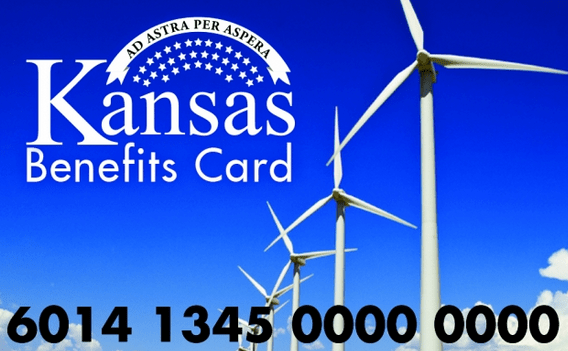In this article we will give you detailed information Kansas EBT Income Guidelines. Kansas SNAP income requirements must be met before you will be approved for benefits. Households are required to pass certain income tests unless all members of your household are receiving TANF, SSI, or in some cases general support. When applying for a food stamp, the Kansas SNAP Income Policy require most households to pass both gross and net income tests.
In a situation where the household has an elderly person or a person receiving certain disability payments, they only need to pass the net income test.
What does gross and net income mean?
Gross income means the total, non-excluded income of a household before any deductions are made. While net income means gross income minus allowable deductions.
Kansas EBT Income Guidelines 2018
The monthly gross income limit is 130% of the poverty line for the household size. The monthly net income limit is 100% of poverty. Your household income is only a part that is taken into account when trying to qualify for SNAP.
SEE ALSO: Easy Way to Check Kansas EBT Card Balance
Kansas Gross Income Standards for Monthly Income
(130% of the poverty line)
| Size of household | Income limits |
| 1 | $ 1,307 |
| 2 | $ 1,760 |
| 3 | $ 2,213 |
| 4th | $ 2,665 |
| 5 | $ 3,118 |
| 6th | $ 3,571 |
| 7th | $ 4,024 |
| 8th | $ 4,477 |
| Every additional member | $ 453 |
Kansas Net Monthly Income Eligibility Standards
(100% of the poverty line)
| Size of household | Income limits |
| 1 | $ 1,005 |
| 2 | $ 1,354 |
| 3 | $ 1,702 |
| 4th | $ 2,050 |
| 5 | $ 2,399 |
| 6th | $ 2,747 |
| 7th | $ 3,095 |
| 8th | $ 3,444 |
| Every additional member | $ 349 |
Kansas Gross Income Standards for Monthly Income for Households Where Elderly People with Disabilities are a Separate Household
(165% of the poverty line)
| Size of household | Income limits |
| 1 | $ 1,659 |
| 2 | $ 2,233 |
| 3 | $ 2,808 |
| 4th | $ 3,383 |
| 5 | $ 3,958 |
| 6th | $ 4,532 |
| 7th | $ 5,107 |
| 8th | $ 5,682 |
| Every additional member | $ 575 |
NOTE: Everyone who lives together and purchases and prepares meals together is grouped together or classified as a household. Some people who live together, such as husbands and wives and most children under the age of 22, belong to the same household even if they buy and prepare meals separately.
Who is considered disabled?
In most cases, a person is considered disabled for SNAP purposes if they:
- Receives state disability or blindness payments based on SSI rules
- Receives federal disability or blindness payments under the Social Insurance Act, including additional payments
- Safety Income (SSI) or Social Security or Blindness Payments
- Receives a Railroad Retirement Act pension and is eligible for Medicare or is considered disabled based on SSI rules
- Is a veteran who is completely disabled, permanently home or in need of regular help and attendance
- Is a surviving spouse or child of a veteran who is receiving VA benefits and is considered permanently disabled
- Receives a disability pension from a government agency for a permanent disability under the Social Insurance Act.
ALSO READ: How to Report Grocery Ticket Fraud
How much can a household receive?
The amount of benefits that the household receives is known as allocation. The household’s net monthly income is multiplied by 0.3 and the result is subtracted from the maximum allotment for the household size to find the household’s allotment. The following table provides the lists of the maximum SNAP grant for Kansas.
| Size of household | Maximum monthly allocation |
| 1 | $ 192 |
| 2 | $ 352 |
| 3 | $ 504 |
| 4th | $ 640 |
| 5 | $ 760 |
| 6th | $ 913 |
| 7th | $ 1,009 |
| 8th | $ 1,153 |
| Each additional person | $ 144 |
If you have any questions about the Kansas EBT Income Guidelines 2018 or the Kansas Snap Income Guidelines, feel free to use the comments box below. Also, don’t forget to share this on social media to let others know.

